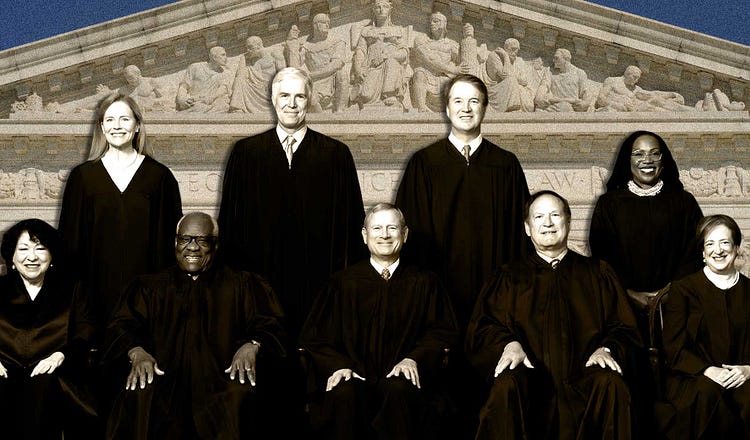
The Supreme Court closed out its 2024-2025 term with a series of much-heralded victories for the right. In CASA, Inc., the Court ruled that district courts could no longer use nationwide injunctions to block major initiatives launched by President Donald Trump. In Skrmetti, the Court upheld a state ban on sex-change procedures for minors. A half-dozen 6-3 decisions showed the Court’s conservative majority dominant and united.
All of this has provoked predictable hair-tearing among progressives. The Court has “unleashed chaos,” says my old friend, Maryland Democratic congressman Jamie Raskin. The Court is “rewarding lawlessness,” MSNBC quoted Justice Sonia Sotomayor as saying. Kate Shaw, a University of Pennsylvania law professor, wrote in a New York Times op-ed that the CASA decision “demonstrates a new degree of imperiousness, seeming to co-sign the Trump administration’s contempt for the lower courts.”
In reality, the Court’s 2025 term was not a barn burner. There wasn’t a single case that came close to the magnitude of Dobbs, which ended the constitutional right to abortion, or SFFA, which banned affirmative action at colleges and universities. The term was more molehill than mountain.
Nevertheless, the 2025 term established two things. First, the right is winning the culture wars at the Supreme Court. Second, despite the administration’s big wins, the Court is not surrendering to the president. The first development is a body blow to the left, but the second is and should be seen as much more important. Take heart, all—the system is working.
Consider the nationwide injunctions case. As I’ve written previously in these pages, CASA was not really a hyperpartisan decision. Administrations and judges on both sides of the aisle have been objecting for years to the idea that a single district court in, say, Hawaii can make policy for the whole nation. What was most crucial in CASA was something critics never focus on: the fact that the administration asked the Supreme Court to do something about this problem.


